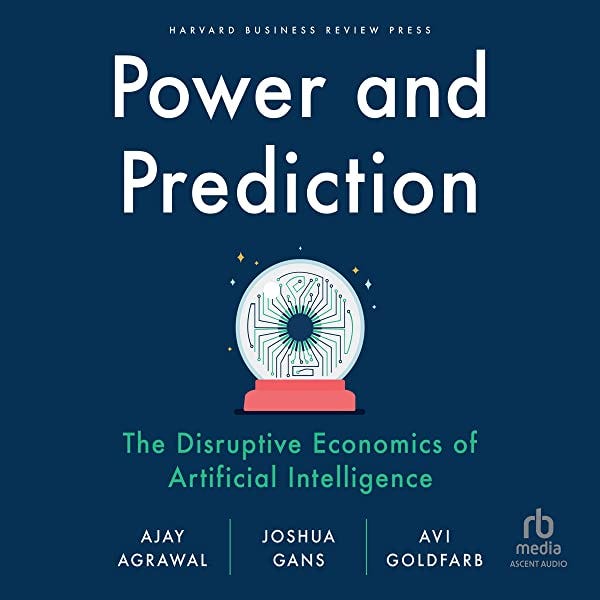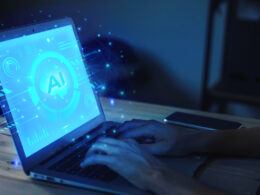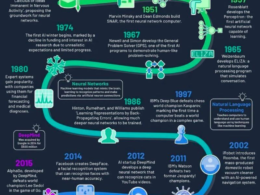Harvard Business Review
by Ajay Agrawal, Joshua Gans, and Avi Goldfarb
December 12, 2022
ChatGPT, from OpenAI, shows the power of AI to take on tasks traditionally associated with “knowledge work.”
But the future won’t just involve tasks shifting from humans to machines.
When technology enables more people to complete a task, with help from a machine, the result is typically entirely new systems with new business models and jobs and workflows.
But the future won’t just involve tasks shifting from humans to machines.
When technology enables more people to complete a task, with help from a machine, the result is typically entirely new systems with new business models and jobs and workflows.
AI will be no different: To truly unlock the potential of ChatGPT, the world will need new and different kinds of organizations.
AI will be no different: To truly unlock the potential of ChatGPT, the world will need new and different kinds of organizations.

Late last month, OpenAI released ChatGPT, a new AI tool that can tell stories and write code.
It has the potential to take over certain roles traditionally held by humans, such as copywriting, answering customer service inquiries, writing news reports, and creating legal documents.
As AI continues to improve, more and more current jobs will be threatened by automation.
It has the potential to take over certain roles traditionally held by humans, such as copywriting, answering customer service inquiries, writing news reports, and creating legal documents.
As AI continues to improve, more and more current jobs will be threatened by automation
But AI presents opportunities as well and will create new jobs and different kinds of organizations.
The question isn’t AI will be good enough to take on more cognitive tasks but rather how we’ll adapt.
The question isn’t AI will be good enough to take on more cognitive tasks but rather how we’ll adapt.
Nobel prize winner Daniel Kahneman is the world’s leading expert in human judgment and spent a lifetime documenting its shortcomings.
Yes, AI may have flaws, but human reasoning is deeply flawed, too.
Therefore, “Clearly AI is going to win,” Kahneman remarked in 2021 . “How people adjust is a fascinating problem.”
Yes, AI may have flaws, but human reasoning is deeply flawed, too.
The key to adjusting is figuring out how to redesign our economic systems to fully engage the working population.
That will require system solutions that don’t just shift the same tasks between people and machines.
As we describe in our new book, Power and Prediction: The Disruptive Economics of Artificial Intelligence , a system solution changes a workflow, disrupting old ways of doing things and generating new ones.

Consider maps.
Over the past decade or so, we’ve shifted to AIs to provide us directions from one place to another.
The AI takes into account road closures, current traffic conditions, and the driver’s preferences for tolls and turns, but the act of driving doesn’t fundamentally change.
An early application of these automated directions was in the taxi industry.
Taxi drivers could use digital and AI-based tools to find more efficient routes and, when combined with mobile phones, more efficient dispatch.
The taxi industry took AI-based driving directions and digital dispatch to create a point solution: Doing the same thing, using the same system (the established taxi industry), but better.
The taxi industry took AI-based driving directions and digital dispatch to create a point solution: Doing the same thing, using the same system (the established taxi industry), but better.
However, Uber and Lyft used these same tools to deliver something different.
Instead of better dispatch and better directions, they created an entirely new system of ride-hailing.
With reliable driving directions and ubiquitous mobile devices, they realized that anyone could provide ride services.
The number of people who could match the skill of professional drivers became several times larger.
Five years ago, there were approximately 200,000 professional taxi and limo drivers in the U.S. Today, there are more than 10 times that number of people who drive for Uber alone (approximately 3.5 million in the U.S.)
But to integrate this much larger workforce required further innovations in security, location tracking, pricing, dispatch, and a wide variety of other areas. The entire system needed to change.
But to integrate this much larger workforce required further innovations in security, location tracking, pricing, dispatch, and a wide variety of other areas. The entire system needed to change.

Similarly, with new generative language models, we may soon have machines that can take over the work of writing out ideas in easy-to-read, grammatically correct paragraphs.
This will enable millions more people to write well.
Those of us who make our living through our ability to parse the rules of English grammar and rhetoric may suffer from this competition because AI has upskilled the rest of the population.
Those of us who make our living through our ability to parse the rules of English grammar and rhetoric may suffer from this competition because AI has upskilled the rest of the population.
But just as AI maps created Uber, not just better taxis, AI writing will change systems, too.
We don’t know what the system solutions from these large language models will look like or what business models they will unlock, but giving almost everyone the ability to write clearly and effectively will impact who is capable of which jobs.

ChatGPT is not the only AI tool that seems to do certain creative tasks better and faster than humans.
DALL-E, also from OpenAI, provides images.
Ask for an image of a cat playing on a cell phone in an airplane, and DALL-E will provide one in seconds.
Graphic design becomes possible at scale. High school presentations become rich with images.
Again, the particular system solutions that will be unlocked aren’t clear, but upskilling millions of people in their ability to create and manipulate images will have a profound impact on the economy.
Again, the particular system solutions that will be unlocked aren’t clear, but upskilling millions of people in their ability to create and manipulate images will have a profound impact on the economy.
These recent advances in AI will surely usher in a period of hardship and economic pain for some whose jobs are directly impacted and who find it hard to adapt — what economists euphemistically call “adjustment costs.”
However, the genie is not going back into the bottle.
The forward march of technology will continue, and we must harness the new capabilities to benefit society.
To do so, we must ask what new systems can be built with these new tools.
This article was written by Ajay Agrawal, Joshua Gans, Avi Goldfarb, and ChatGPT.
Yes, ChatGPT helped write what you just read.
We wrote a draft and requested ChatGPT to “Re-write the following essay in a more interesting way.” It did.
If you want an AI-free discussion please read the new book from the humans here, Power and Prediction: The Disruptive Economics of Artificial Intelligence published by Harvard Business Review Press.
Originally published at https://hbr.org on December 12, 2022.
Names mentioned
Nobel prize winner Daniel Kahneman is the world’s leading expert in human judgment and spent a lifetime documenting its shortcomings.
leading expert in human judgment and spent a lifetime documenting its shortcomings.












